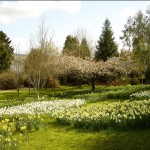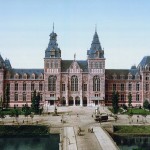The Golden Assets of Scotland
Posted On November 19, 2009
Country Info
A part of the United Kingdom, Scotland (area: 78,772 square kilometers) is located in the north of the Great Britain. It has England in the south and North Sea in the east and the Atlantic Ocean in the north and west. Scotland has over 790 islands besides the mainland. Edinburg is the national capital.
Primary Info
The Golden Eagle (Aquila Chrysaetos) is a big bird of prey found mainly in Scotland, a country in the Great Britain featuring open treeless areas down to the sea level (it is also found in areas of Eurasia, North America and Africa). It belongs to the Accipitirdae family. Golden Eagle is the national bird of Mexico. The Scots too recognise the Golden eagles as the symbol of the inspiring beauty of their country. Efforts are on to declare the bird as the national bird of the country.
the country.
Habitat and breeding
As said earlier, the Golden Eagles prefer open areas to woodlands and they are mainly found in the lower altitudes of Scotland and away from human settlements in inaccessible areas. The breeding density of these birds is the highest in Scotland and they do not migrate from their breeding territories. Golden Eagles take several years to attain maturity and breed only when they are 4-5 years old. The breeding season continues throughout the year. The female eagles lay 1-3 eggs in early to mid-April and incubate them for about a month and half.
Development of young birds
The young birds spend 9-11 weeks in the nest before making initial flights. More often, majority of the young birds fail to survive the first winter. However, once survived, they would live for over two decades.
Diet
Golden Eagles feed on any available prey including small birds to snakes. In land areas, they consume hares, ground squirrels and grouse while in the more coastal areas, they target fish,  gulls and fulmars. Sometimes full grown dears, goats and antelopes too have caught their wrath.
gulls and fulmars. Sometimes full grown dears, goats and antelopes too have caught their wrath.
Threats to Golden Eagles
Golden Eagles have no common enemy but hunting by man and heavy metal poisoning. Also poor habitat qualities hinder successful breeding of the birds.
Features
Adult Golden Eagles have light golden brown colour on their head, neck and shoulders. Their bodies have medium brown colour. These birds have a smaller head and longer tail. In the younger birds, the plumage is dark chocolate brown with conspicuous white markings on the wings and upper parts of the tail. Golden eagles call only when agitated or hungry. They have a wingspan of more than 2 metres and a body length extending upto 1 metre. They weigh between 3-7 kilograms and have an average lifespan of 30 years. They are very swift in their movements and can dive upon their prey at a speed of over 150 miles per hour. Golden Eagles have very good eyesight and can spot their preys from a long distance. They use their talons for killing and carrying the prey and beak for eating. These birds prefer to make their nests in higher places like cliffs and trees. Golden eagles mainly congregate in Autumn. The largest known congregation of these birds takes place in the state of Montana.
Preservation of Golden Eagles
The bird saw a steep decline in its population in Central Europe. They mainly got restricted in the Scottish Highlands. Authorities nowadays take care of the fact that Golden eagles require open areas for their survival. Forestry operations in Scotland today include setting up of exclusive zones around the nests of these birds. Bodies like Scottish Natural Heritage and the Royal Society for the Protection of Birds are closely working with the forestry authorities towards the conservation and welfare of the Golden Eagles. In Ireland also where the bird went extinct in early 20th century, forty-six Golden eagles have been reintroduced. The In North America too, habitat destruction has been a major threat to the Golden eagle population. In the US, the bird is legally protected by the Bals and Golden Eagle Protection Act while in the UK they are protected under the Wildlife and Countryside Act of 1981.
Areas in Scotland where Golden Eagles can be found
 Every year thousands of tourists visit Scotland to watch the Golden Eagles. In Scotland, as per the last census in 2003, there are 400 pairs of the bird. There are several places in Scotland that offer the opportunity to witness the fantastic Golden Eagles besides varieties of other birds..
Every year thousands of tourists visit Scotland to watch the Golden Eagles. In Scotland, as per the last census in 2003, there are 400 pairs of the bird. There are several places in Scotland that offer the opportunity to witness the fantastic Golden Eagles besides varieties of other birds..
- Ivnverarish Raasay Forest where apart from Golden and the White-tailed eagles, common birds like wren, woodpecker, robin can also be found
- Portree where sparrowhawks and woodland song birds can also be found besides the eagles
- Rosehall Forest where the eagles can be found circling and hovering above
- Inshriach Forest where Black Grouse, Osprey, Crossbills can beseen besides the Golden Eagles
- Brochel Wood where herons and sea birds can also be found
- Borgie which also offer sight for Greenshank, Dippers, Ptarmigan and others
- Cnoc nan Ghabar where Hen Harriers and Black grouse can also be found
- Slattadale
- Knapdale Forest
- Ardery Ard Airigh
- Sutherland where Black Throated Divers can also be found
- Kylerhea
- West Loch Awe
- Great Glen Forest
- Sunart Oakwood
- Ardcastle
- Beinn Ghuilean where smallest birds of Great Britain like Gold Crests and Tree Creepers are found
- Kilmichael Forest
- Lael Forest
Watching Golden Eagles
Even though the Golden Eagles are every birdwatcher’s prized sight, getting a glimpse of the bird is not easy. However, the RSPB Scotland in collaboration with the Ardnamurchan Natural History Centre has come up with a unique combination of technology and old-fashioned baits to give the visitors an opportunity to witness the bird. Eagles are lured in by animal carcasses and then filmed by CCTVs which are shown live to the visitors. The RSPB has also designed ‘Aren’t Birds Brilliant’ site to allow public viewing of rarest birdlife in the UK.
‘On Mull’ is another project that allows wildlife enthusiasts to watch eagles in Scotland.
Isle of Mull
The Isle of Mull, which lies off the western coast of Scotland is a nature-lover’s paradise. Easily reachable from the resort town of Oban and village of Lochaline in Movern peninsula in western coast of Scotland, the island is 300 square miles in area with a 360 mile long coastline. Besides sandy beaches, rocky surfaces and sea lochs, the Isle of Mull gives one the opportunity to watch some of the most magnificent birds including the Golden Eagles.
When to see Golden Eagles
The birds can be seen in early spring when they return to their nest on a high up location. The male birds can be found hovering above at the start of the breeding season. In the winter and autumn, the young eagles can be seen at lower altitudes.
Where to see
These birds are perennial residents of Scotland and can be found in their territories in the mountainous and high moorland areas. They can be seen in remote areas too.











